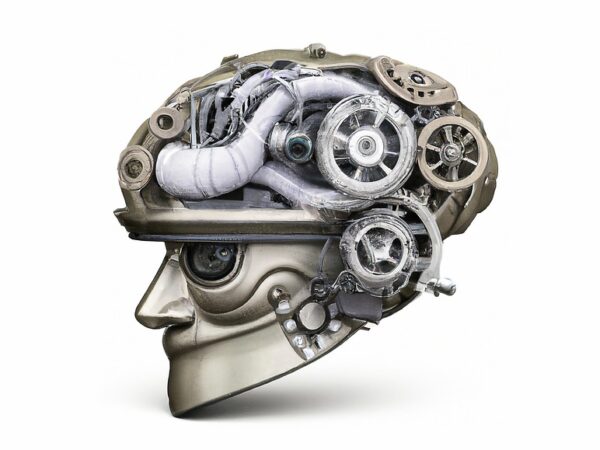
[ad_1]
Robotic Process Automation (RPA) is a game-changer for businesses looking to streamline their operations and increase efficiency. By automating repetitive tasks and processes, RPA allows organizations to free up their employees to focus on more strategic and value-added activities. In this article, we will explore how RPA is revolutionizing business processes and the various benefits it brings to the table.
Table of Contents
- Introduction
- What is Robotic Process Automation?
- Benefits of RPA
- Implementation of RPA
- Challenges of RPA
- Future of RPA
- FAQs
What is Robotic Process Automation?
Robotic Process Automation (RPA) refers to the use of software robots or “bots” to automate repetitive, rule-based tasks and processes within an organization. These bots are programmed to mimic human actions and interact with various systems and applications to perform tasks such as data entry, data extraction, report generation, and more. RPA technology enables organizations to automate mundane tasks and processes, freeing up employees to focus on more strategic and value-added activities.
Benefits of RPA
There are several benefits of implementing Robotic Process Automation in business processes:
1. Increased Efficiency
RPA can help organizations streamline their operations and increase efficiency by automating repetitive tasks and processes. This allows employees to focus on more strategic and value-added activities, leading to increased productivity and cost savings.
2. Improved Accuracy
Robots are programmed to follow predefined rules and instructions, which helps reduce errors and improve accuracy in tasks such as data entry and data extraction. This can result in better decision-making and improved overall business performance.
3. Cost Savings
By automating repetitive tasks and processes, organizations can reduce the need for manual intervention and free up employees to focus on more strategic activities. This can lead to cost savings in terms of labor, time, and resources.
4. Scalability
RPA technology allows organizations to scale their automation efforts easily, depending on the business requirements. This flexibility enables organizations to adapt to changing market conditions and business needs quickly.
5. Compliance and Auditability
RPA can help organizations ensure compliance with regulations and standards by enforcing consistency and accuracy in processes. Additionally, robots can log every action they perform, providing a detailed audit trail for compliance purposes.
Implementation of RPA
Implementing RPA in business processes involves several steps:
1. Identify Processes
Identify the tasks and processes that are repetitive, rule-based, and time-consuming. These are the ideal candidates for automation using RPA technology.
2. Analyze and Design
Analyze the identified processes and design the automation workflows using RPA tools. Define the rules and logic that the robots will follow to perform the tasks accurately.
3. Develop and Test
Develop the automation workflows using RPA tools and test them to ensure they function as expected. Make any necessary adjustments to optimize performance and accuracy.
4. Deploy and Monitor
Deploy the automation workflows in the production environment and monitor their performance. Continuously monitor the robots to ensure they are functioning correctly and make any necessary adjustments as needed.
Challenges of RPA
While Robotic Process Automation offers numerous benefits, there are also challenges associated with its implementation:
1. Change Management
Implementing RPA requires organizational change and buy-in from employees. Resistance to change and fear of job loss can hinder the successful adoption of RPA technology.
2. Integration with Legacy Systems
Integrating RPA with legacy systems and applications can be challenging, as these systems may not be designed to work with modern automation technologies. This can lead to compatibility issues and delays in implementation.
3. Scalability
Scaling RPA initiatives across the organization can be complex, especially as the number of automated processes increases. Organizations need to plan for scalability from the outset to ensure successful implementation.
4. Security and Compliance
Ensuring the security and compliance of RPA processes is crucial to protect sensitive data and maintain regulatory compliance. Organizations need to implement robust security measures and controls to mitigate risks associated with automation.
Future of RPA
The future of Robotic Process Automation looks promising, with advancements in technology and increased adoption across industries. Some key trends shaping the future of RPA include:
1. Artificial Intelligence
Integration of artificial intelligence (AI) capabilities into RPA tools will enable robots to learn and adapt to new situations, making them more intelligent and efficient in performing tasks.
2. Cognitive Automation
Cognitive automation combines RPA with AI technologies such as natural language processing and machine learning to automate complex and cognitive tasks that require human-like reasoning and decision-making.
3. Process Mining
Process mining techniques can be used to analyze and optimize business processes before automating them with RPA. This helps organizations identify inefficiencies and bottlenecks, leading to more effective automation solutions.
4. Hyperautomation
Hyperautomation involves the use of a combination of technologies, including RPA, AI, machine learning, and analytics, to automate end-to-end business processes. This holistic approach can drive significant efficiencies and cost savings for organizations.
FAQs
Q: What industries can benefit from Robotic Process Automation?
A: Robotic Process Automation can benefit a wide range of industries, including banking and finance, healthcare, manufacturing, retail, and more. Any organization that has repetitive, rule-based tasks can benefit from implementing RPA technology.
Q: How long does it take to implement RPA in business processes?
A: The time it takes to implement RPA in business processes depends on the complexity of the processes being automated, the availability of resources, and the level of expertise in RPA technology within the organization. On average, it can take anywhere from a few weeks to several months to implement RPA successfully.
Q: What are some best practices for successful RPA implementation?
A: Some best practices for successful RPA implementation include identifying the right processes for automation, involving key stakeholders in the decision-making process, providing adequate training to employees, and continuously monitoring and optimizing the automation workflows for maximum efficiency.
[ad_2]




















